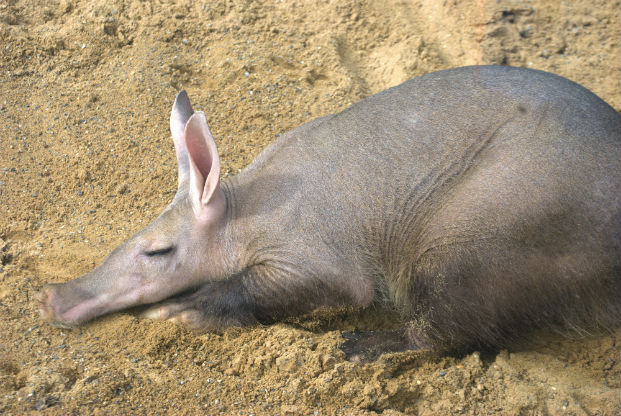
The aardvark is unmistakable with its seemingly naked body, long pig-like snout and large pointed ears. Their main requirement from their habitat is a good supply of ants and termites which makes up the majority of their diet. They are prolific diggers with their discarded holes being used by a myriad of other animals.
Vote for the fact you find most fascinating
The aardvark has favourite termite mounds that it likes to feed at, it marks these with anal gland secretions.
Aardvark droppings contain a lot of sand and soil which they ingested when feeding on their prey. However, these droppings are rarely found because the animal buries its dung.
An aardvark can put its tongue in to holes that are 25-30 cm deep. As it does so ants and termites become stuck to the saliva covering the tongue, it uses this technique to gather up to 50,000 ants in one night.
Facial bristles over the eyes, nostrils that close and folding ears are so designed to stop sand and dirt becoming too much of a nuisance to the aardvark when it is digging.
Aardvarks are so good at digging they are able to escape danger by digging themselves into a hole, they are able to dig 60 cm in just 15 seconds.
Once inside its hole the aardvark will close the entrance using the excavated soil.
Instead of chewing food with its teeth the aardvark grinds it down in its stomach.
Termites often congregate on the western side of the termite mound as this part of the nest is warmed by the setting sun, as a result aardvarks will sometimes open this side to feed.




